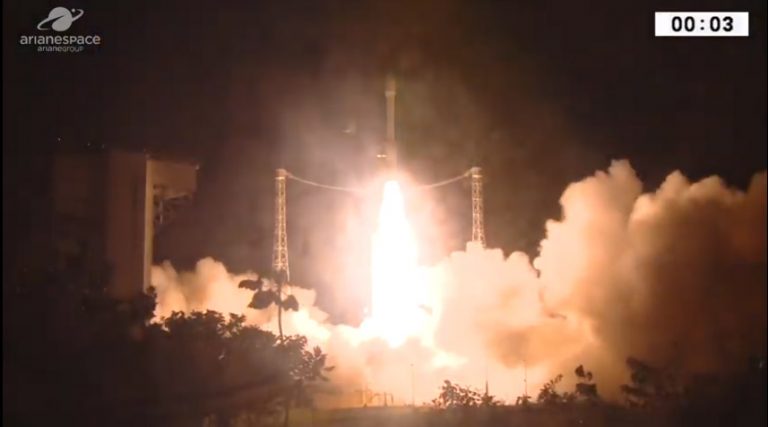A European Vega rocket suffered a “major anomaly” while launching a satellite for the United Arab Emirates late Wednesday (July 10), leading to the loss of the rocket and its payload, according to Arianespace, which built the booster.
The Vega rocket launched the FalconEye1 Earth-observation satellite for the United Arab Emirates (UAE) from the Guiana Space Center in Kourou, French Guiana. Liftoff occurred at 9:53 p.m. EDT (10:53 p.m. local time, or 0153 GMT July 11). The nighttime liftoff was a dazzling sight, but then something went very wrong.
“About 2 minutes after liftoff … a major anomaly occurred, resulting in the loss of the mission,” said Luce Fabreguettes, Arianespace’s Executive Vice President of Missions, Operations and Purchasing, in a televised statement just after the failed launch.

Fabreguettes said Arianespace wanted to “express our deepest apologies for the loss of our payload.” She added that officials would look at data from the launch and provide more information as they investigate what happened.

The launch trajectory shown on the broadcast appeared to deviate from the normal track shortly after the Vega rocket’s liftoff, Arianespace officials said shortly after launch. Some observers on Twitter watching Arianespace’s live launch webcast speculated that the Vega booster’s second stage did not appear to light up at the planned time, although this has not been confirmed yet by Arianespace.
Read more HERE
Ask me anything
Explore related questions





